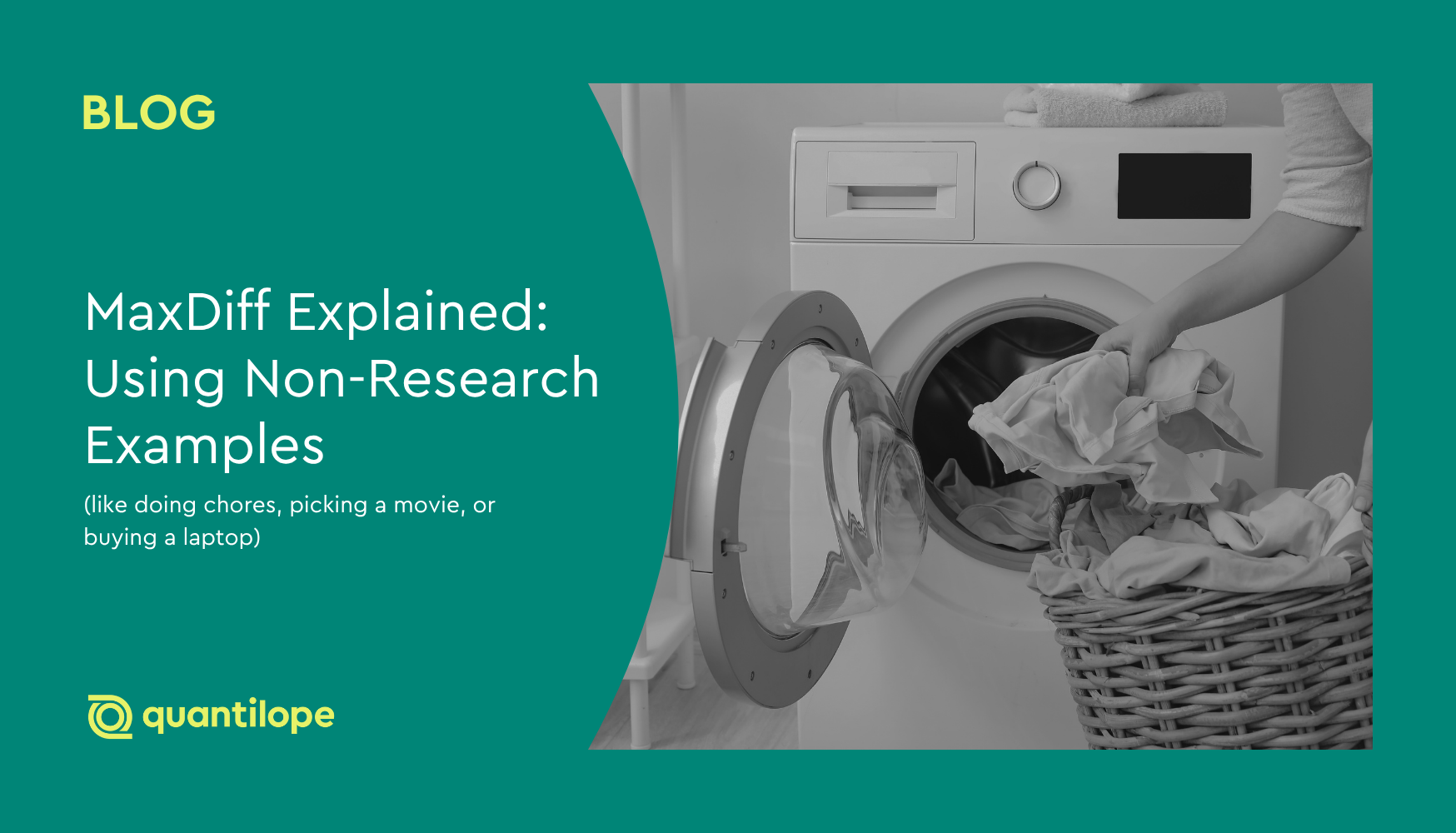How to create a branding questionnaire to solidify a brand identity
An effective branding questionnaire will include all the questions needed to create a comprehensive profile of your brand in terms of voice, personality, and values.
The most efficient way of creating a branding questionnaire is through an online survey platform. A good platform will have a template that contains the most common and useful questions for a brand identity survey. It will also have a survey builder that allows you to easily drag and drop questions into your own questionnaire to make it unique and customizable to you.
To supplement your questionnaire, you may also decide to conduct other consumer research to understand how your customers’ perceptions of certain elements of your brand fit with the perceptions you were aiming to achieve. This might include logo design research, a brand awareness study, brand tracking, and/or concept testing - if you are considering rebranding or want to identify which propositions are most important to your target audience.
Back to Table of Contents
Top 12 questions to consider when building your branding questionnaire
There are some essential branding questions to keep in mind when building a branding questionnaire. Every branding questionnaire will be unique, as each business and corporation is unique.
Ask yourself these questions when drafting your branding questionnaire to help guide actionable insights:
1. What’s your brand’s story?
Marketing and branding are all about stories. They are at the center of every brand’s proposition and they are responsible for building engagement with the target audience. Within this question, you need to answer what the brand’s literal story is - how the company or product started, what’s behind the company name, how it developed along the way, what has made it the brand it is today - as well as the story that you want the brand to tell its customers. Which adjectives would you use to describe your brand? What is its personality? What is the brand’s purpose? What does it offer the customer? Why should customers buy into it?
2. Who is your ideal customer?
Customers are becoming more responsible than ever for shaping a brand’s identity. No matter how much you put into creating the identity, customers will recreate it based on their own experience of the brand and will perpetuate their perceptions via social media and other interactions they have with people.
Knowing who your customers are and who your ideal customers are (based on previous market research, or on knowing who you hope to target with your brand) will help reveal what your brand needs to do to appeal to them. Knowing this will help inform brand personality, values, and communications to effectively reach these people. Learning more about your target customers can also inform which media your customers use the most, what they will do to help spread the word about your brand, and which channels to invest in for the highest audience engagement.
3. Who are your main competitors fighting for customer loyalty?
In addition to knowing who your customers are, knowing which brands you’re up against is just as crucial. You will need to know the rules of the category - what works, what doesn’t, and what customers expect from it. Within the competitive area, you'll need to know which brands are most successful and why. This will tell you which parts of their strategy your brand should emulate or build upon, or where your brand can offer something different, which leads into...
4. What is your unique selling point (USP)?
What does your brand have that no other brand does? This might be hard to pin down in a crowded category, but there is always something that a brand can claim as its own. It might be your business’ ethos - perhaps efficiency, environmental credentials, or striving for excellence - or more practical or visible benefits like cleaning power, taste, or some other aspect of performance. Whatever it is, this aspect that sets your brand apart should be at the core of your messaging.
5. What is your long-term vision for your brand identity?
You might have a good idea of where your brand is at now, but how do you see it progressing? Will it stay the same, build upon existing values, or develop new ones? Knowing the direction of travel for your brand will help you to establish what you need to do now to lay the groundwork and prepare your target audience.
6. What do you like about your current brand identity?
It’s good to identify what you like and what works amongst your customers, as these elements of your brand should remain stable over time to build loyalty. Make sure to distinguish though between what you like and what your customers like, as these might not always be the same things and, as all good businesses know, the customer comes first.
7. What do you dislike about your current brand identity?
There may be some parts of your identity that used to work but don’t anymore. They may have become outdated, or the competition might have changed the landscape and certain characteristics of your brand just aren’t relevant in the new market setting. Again, check with your customers before you remove any elements that, to them, might be central to your offering.
8. How do your current logo design and branding efforts communicate your brand identity?
Having determined your brand values and personality, also be sure to examine whether your logo and other branding devices are in line with what you want to communicate about the brand. For example, if you want your logo or web design to imply a brand that’s modern and fun, are the current design elements getting this across? Are the color themes holding it back? Consumer research can be invaluable here; launch a survey to explore your existing logo and any alternatives, evaluate your website, and get reactions to your advertising concepts or ideas.
9. What logo designs and other brands inspire you?
Identifying other logos and brands that you love - whether within or outside the category in which your business operates - can bring inspiration to your own brand’s visual identity. Consider what it is about that branding that you admire; are you drawn to a clean design, smart lettering, good use of color, or something else? How do those logos relate to the brand that they represent?
10. Which fonts best represent your brand?
Some fonts are traditional, some modern, some intricate, some subtle...the number of fonts available is endless, so narrowing down the words you would use to describe your brand identity should help you decide which fonts suit it best. If you’re a delivery company, you might want to use a font that suggests an element of speed while a mattress company might choose one that implies calm and relaxation.
11. Which colors do you want to make up your brand design?
We know that colors can provoke emotional reactions in people and it’s worth looking at the semiotics involved here to decide which colors will best communicate the feel of your brand. Speed and urgency might mean that red or orange are featured prominently in your branding materials; purple or blue might be good choices to convey calmness and relaxation.
12. What is your brand voice?
Having thought about which separate visual elements would work well for your brand and what your unique selling point is, think finally about how your brand would speak if it could. Is it reassuring? Bubbly? Confident? Caring? This will guide the tone of your communication. Using personification techniques in market research can help establish how customers perceive and think about your brand.
Back to Table of Contents
Interested in brand health tracking? Check out quantilope's modernized approach based on the acclaimed work of Professor Jenni Romaniuk of the Ehrenberg-Bass Institute of Marketing Science (author of Better Brand Health and co-author of How Brands Grow).
Branding questionnaire example
Oatly, a brand of plant-based dairy product alternatives, came to quantilope with the vision to broaden its brand perception beyond simply being a vegan-only lifestyle brand. To determine what that new brand positioning should be to appeal to a wider audience, Oatly knew they needed data-backed market research insights to drive their future strategy.
quantilope's automated Consumer Intelligence Platform enabled Oatly to take full control of its branding questionnaire while still having support from quantilope's certified research team as needed. In a fraction of the time it would take with a traditional research agency, Oatly was able to set up, launch, and analyze insights to guide its branding decisions.
"Other options we were evaluating exhibited limitations in terms of survey question dimensions. This would have meant too many compromises for us. quantilope, on the other hand, provided balance. It allowed us to execute the research ourselves guided by both its platform and personal support, and with no change to our internal processes whatsoever."
Sandra Schlicht (Business Insights Manager for Oatly DACH).
In leveraging quantilope’s intuitive platform navigation and advanced features, Oatly was able to quickly generate meaningful insights about their target audience to clearly identify actionable consumer groups and unmet needs for dairy alternatives.
To read more about quantilope's branding questionnaire capabilities, check out the full client case study here.
Back to Table of Contents
Branding questionnaire with quantilope:
Establishing a solid brand identity using a branding questionnaire can be a central pillar of your branding and communication approach. There are a number of online platforms offering tools to build a branding questionnaire, so it's important to choose one that will generate real value for your business.
quantilope's intuitive, end-to-end platform allows market researchers to automate every step of their research process for fast, flexible, and reliable consumer insights. Start with a pre-built template and customize from there, or build your branding questionnaire from scratch using drag & drop modules. With a library of templated descriptive metrics and 15 advanced methods to choose from (like an A/B test or implicit association testing), you'll be able to cover all angles of branding questions to define or further understand your brand identity.
Whether you're looking to test brand features, finalize logos, draft marketing collateral, test product concepts, or some other form of branding material, quantilope makes the research process efficient from start to finish. Begin analyzing results with real-time charting before fieldwork even wraps up to get a head start in building your final branding study dashboard.
Beyond quantitative surveys, quantilope also offers a qualitative approach through its video research tool, inColor. Video-based responses bring you face-to-face (virtually) with your consumers, bringing your findings to life with engaging footage. This is a great method for exploring the emotional side of your brand identity in detail.
To learn more about building a branding questionnaire with quantilope, get in touch below!






